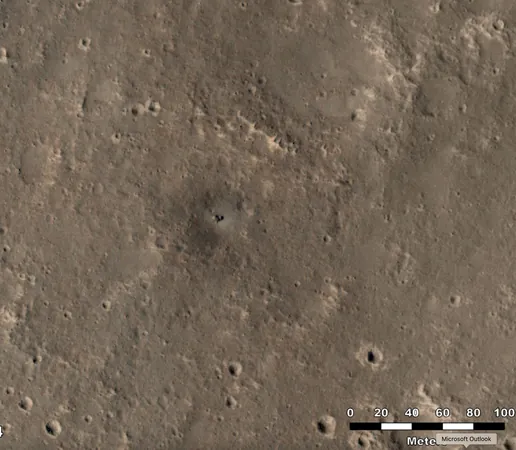
Unlocking the Secrets of Star Birth: Astronomers Discover Magnetic Fields as Key Ingredient in Galaxy Mergers!
2024-12-20
Author: Charlotte
Introduction
For the first time in astronomical history, scientists have uncovered the pivotal role that magnetic fields play in the formation of young stars—a revelation akin to finding the secret ingredient for the perfect holiday recipe. Researchers from an international team led by Dr. David Clements from Imperial College have identified magnetic fields within the galactic merger of Arp220, challenging long-held theories and opening a new chapter in our understanding of star formation.
The Role of Magnetic Fields
Just as a pressure cooker relies on its lid to maintain heat and moisture for cooking, merging galaxies may depend on these magnetic fields to create optimal conditions for star formation. Until this groundbreaking discovery, the idea of magnetic fields aiding star birth was merely hypothetical. Now, evidence has emerged from the cores of merging galaxies, shedding light on the complex dynamics at play.
Insights from Dr. Clements
Dr. Clements likened the star formation process to preparing a festive dessert, emphasizing, "If you want to cook up a lot of stars in a short period of time, you need to squeeze lots of gas together. In the cores of galaxy mergers, this is exactly what happens." However, without a stabilizing force, such as magnetic fields, the resulting heat from young stars could cause this gas to spill over, disrupting the formation process.
Implications of the Discovery
The implications of this discovery are profound. In galaxy mergers, intense starburst activity occurs, leading to rapid star formation at rates much higher than typical galaxies. Understanding how magnetic fields might serve as a binding force to retain star-forming gas amidst the chaos could unlock the mystery of why these merging systems behave so differently.
Research Methodology
Using the Submillimeter Array (SMA) located on Maunakea in Hawaii, researchers examined Arp220—a bright beacon in the universe resulting from the merger of two gas-rich spiral galaxies. This region is known for its extraordinary starburst activity, where immense amounts of gas and dust collide, inflating the likelihood of new star creation. Crucially, about half of all starlight is emitted at far-infrared wavelengths, making Arp220 a prime target for such studies.
Future Research Directions
As the team pushes forward, they aim to utilize the Atacama Large Millimeter/submillimeter Array (ALMA) to search for magnetic fields in other ultraluminous infrared galaxies. What’s particularly exciting is that Arp220 is among the brightest, with the nearest competition being four times dimmer. This could set the stage for a new wave of observations that reveal deeper insights into the cosmic processes fueling star formation in the universe.
Conclusion
As scientists navigate this vibrant landscape of cosmic evolution, the hope is that further exploration will clarify how magnetic fields influence not just Arp220, but other luminous galaxies across the cosmos. Hold on to your telescopes—this thrilling journey into the heart of star formation is just beginning!









 Brasil (PT)
Brasil (PT)
 Canada (EN)
Canada (EN)
 Chile (ES)
Chile (ES)
 España (ES)
España (ES)
 France (FR)
France (FR)
 Hong Kong (EN)
Hong Kong (EN)
 Italia (IT)
Italia (IT)
 日本 (JA)
日本 (JA)
 Magyarország (HU)
Magyarország (HU)
 Norge (NO)
Norge (NO)
 Polska (PL)
Polska (PL)
 Schweiz (DE)
Schweiz (DE)
 Singapore (EN)
Singapore (EN)
 Sverige (SV)
Sverige (SV)
 Suomi (FI)
Suomi (FI)
 Türkiye (TR)
Türkiye (TR)